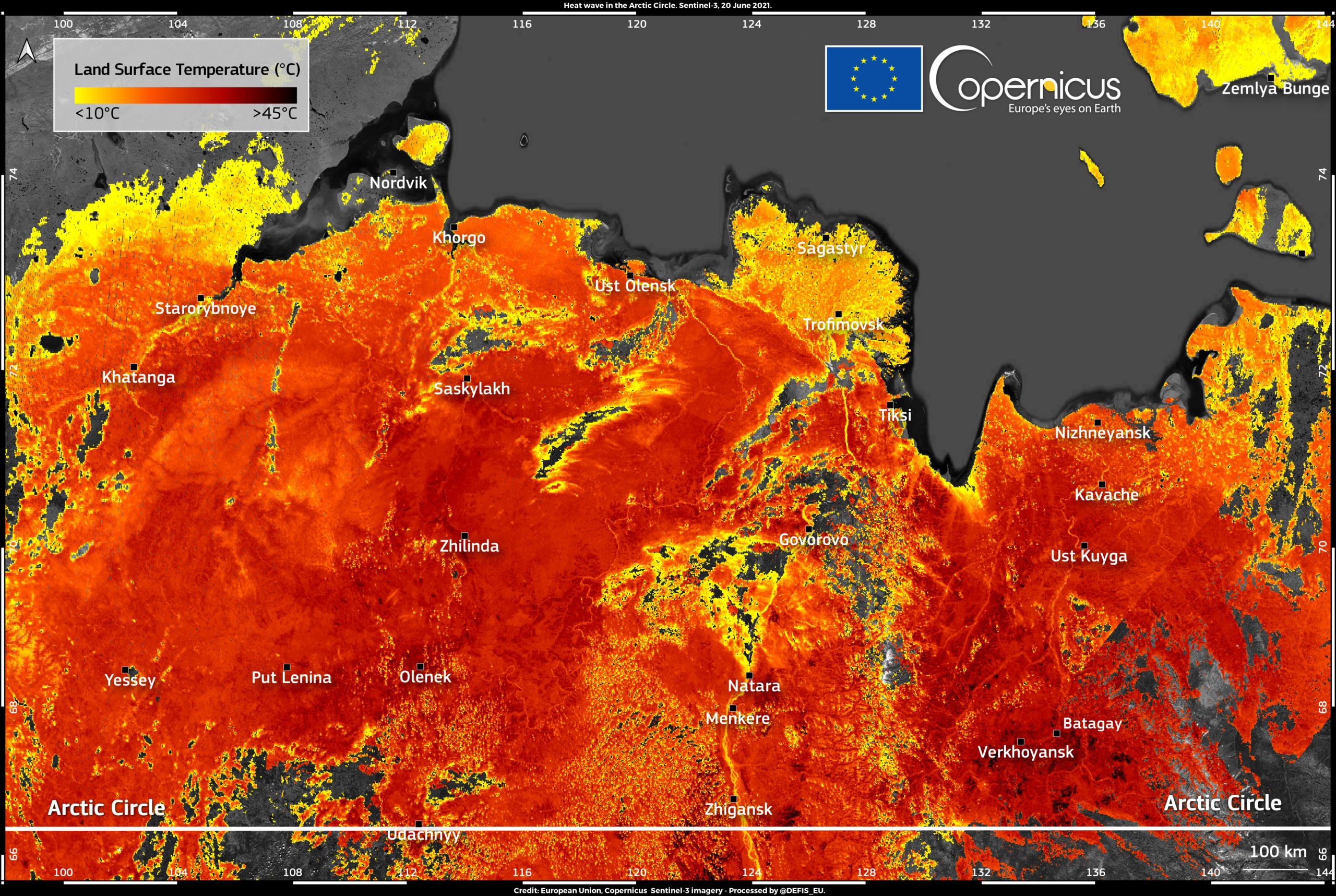Siberia sees record heat — again
A European Union satellite measured ground temperatures of 118 degrees Fahrenheit in the Russian Arctic earlier this week.

A heatwave is pummeling Siberia, bringing record-high temperatures to parts of the Russian Arctic along with the risk of more intense wildfires in a region that has already seen record fire seasons in recent years.
On Monday, satellites with the European Union’s Copernicus Earth observation program detected exceptionally high ground temperatures across much of the region, with a high reaching an astounding 48 degrees Celsius (118 degrees Fahrenheit) near Verkhoyansk, in the Sakha Republic, while other sites recorded highs of 43 degrees C (109.4 degrees F) and 37 degrees C (98.6 degrees F).
It’s important to note that those are ground temperatures, not air temperatures. For example, that latter figure was recorded in Saskylakh, also in the Sakha Republic, where air temperatures taken at the same time were a slightly cooler 31.9 degrees C (89.4 degrees F). That still set a record for Saskylakh, though, as the hottest pre-solstice temperature recorded there since measurements began in 1936.
The news comes a month after the Arctic Council’s Arctic Monitoring and Assessment working group issued a report confirming that the region is now warming three times faster than the global average, rather than twice as fast. And it comes almost exactly a year after the first 100-degree (Fahrenheit) temperature was recorded north of the Arctic Circle — also in Verkhoyansk.
Beyond the many longer-term risks to Arctic ecosystems posed by a heating climate, there’s a huge short-term danger: wildfire.
Just one day before they spotted high ground temperatures, the EU Copernicus satellites detected a fire burning in an unusually far north area of tundra on Russia’s Taymyr Peninsula. The fire’s location, not far from where the Lena River empties into the Arctic Ocean, is unusual, but the fact that it’s burning in Siberia is not.
Fire season was already under way there by the beginning of May, possibly fueled by so-called “zombie fires” which smolder through the winter only to reignite in spring once conditions allow — and which are becoming more common in the Arctic thanks to climate change.
Zombie fires helped make last year’s Arctic fire season — during which Siberian fires dumped a record amount of carbon into the atmosphere — the worst ever recorded.